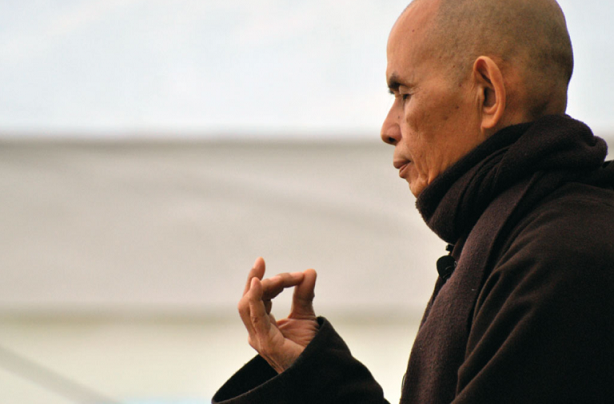A Zen Master Explains the Real Meaning of ‘Letting Go’, And It Isn’t What You Think
According to Buddhism, all our struggles stem from attachment.Now, we might think that attachment is limited to material things, but this isn’t true—it’s also extended to people. And by far, this is the most dangerous form of attachment. It’s hazardous because human beings are quite unpredictable, and they’re susceptible to change more than anything else in life. The reason is because we are conditioned by nature, and conditions change pretty often.

The most important thing to understand is that attachment doesn’t happen overnight. It starts to take place after spending a good amount of time with someone (it could be a family member, a coworker, a friend, or a lover). We don’t really get attached to the person, but to the experience we have with them. We get attached to the range of emotions that this particular person stirs up in us—good or bad.
Maitri
Metta is a Pali word, from maitri itself derived from mitra which, means ‘friendly, amicable, benevolent, affectionate, kind, good-will’, as well as a form of ‘love, amity, sympathy’. The term is found in this sense in the Vedic literature, such as the ShatapathaBrahmana and various early Upanishads, and Vedanga literature such as Paṇini’s Aṣṭadhyayi. The term appears in Buddhist texts as an important concept and practice.
In Buddhist belief, this is a Brahma-vihara (divine abode) or an immeasurable that leads to a meditative state by being a counter to ill-will. It removes clinging to negative state of mind, by cultivating kindness unto all beings.
Karuna
Karuna is generally translated as compassion. In Buddhist psychology, compassion is a form of empathy. We sense others’ suffering as like our own and naturally wish them deep freedom from it. Acompassionate mind, as opposed to a cruel and angry one, is understood to be much more closely attuned to our actual condition. Thus, compassion is informed by the wisdom that understands our basic situation: the inner causes of our suffering and our potential for freedom and goodness.
From a Buddhist perspective, compassion with wisdom is the foundation of emotional healing. Compassion is also characterized as a mental capacity that, when cultivated and strengthened, empowers all positive states of mind as we awaken to our fullest human potential.

Mudita
Mudita meditation is used to cultivate appreciative joy at the success and good fortune of others. Buddhist teachers interpret mudita more broadly as an inner spring of infinite joy that is available to everyone at all times, regardless of circumstances. “The more deeply one drinks of this spring, the more securely one becomes in one’s own abundant happiness, the more bountiful it becomes to relish the joy of other people.”
Joy is also traditionally regarded as the most difficult to cultivate of the four immeasurables (brahmavihārā: also “four sublime attitudes”). To show joy is to celebrate happiness and achievement in others even when we are facing tragedy ourselves.
Upeksha
The real meaning of Upeksha is equanimity, not indifference in the sense of unconcern for others. As a spiritual virtue, upeksha means stability in the face of the fluctuations of worldly fortune. It is evenness of mind, unshakeable freedom of mind, a state of inner equilibrium that cannot be upset by gain and loss, honor and dishonor, praise and blame, pleasure and pain. Upeksha is freedom from all points of self-reference; it is indifference only to the demands of the ego-self with its craving for pleasure and position, not to the well-being of one’s fellow human beings.
In order to let go of attachment to others, Buddhists advise us to start looking within, so we can love ourselves.
Source: TheMindUnleashed
